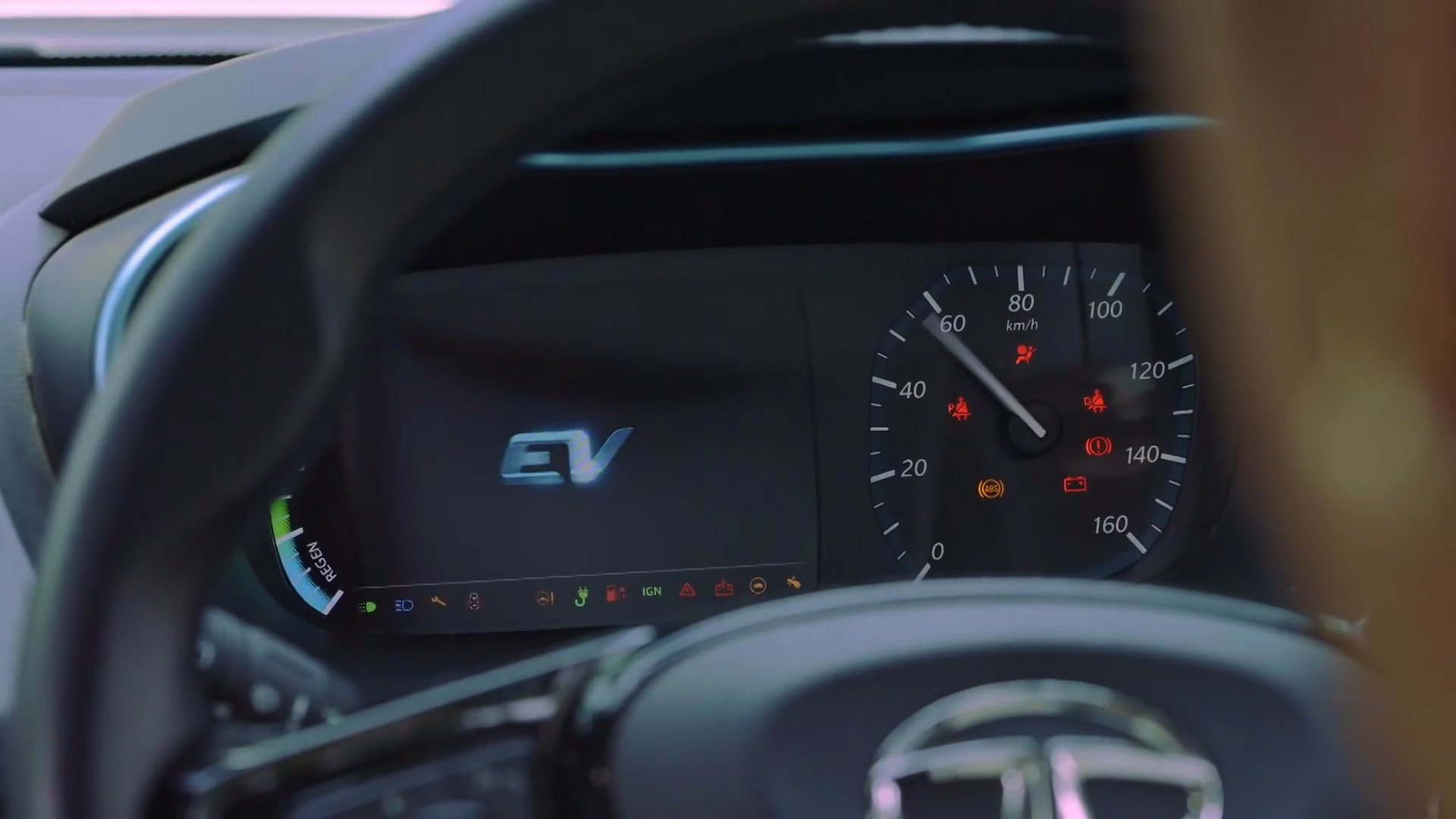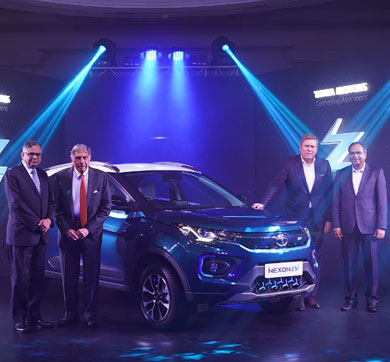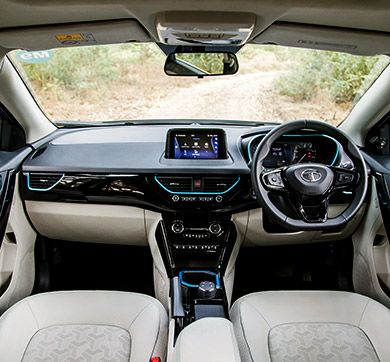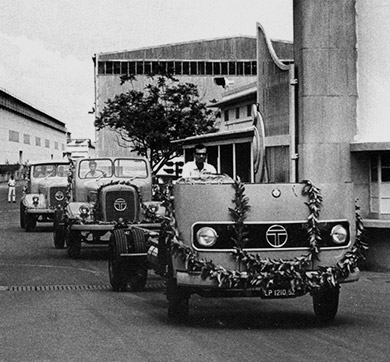January 2022 | 4307 words | 16-minute read
The government's extensive Covid-19 vaccination drive; boost in the infrastructure sector, including transportation infrastructure; rise in consumer spend and a flourishing e-commerce sector are among the factors that have enabled the pandemic-hit economy to bounce back.
India's automotive industry, the fourth largest in the world and accounting for 7.1% of the country's total GDP, is witnessing a disruptive transformation. E-mobility; connected infrastructure, including in-vehicle information and communication technologies; and Bharat Stage-6 (BS6) emission and safety norms are some of the factors impacting the automotive industry's value chain. Furthermore, customer aspirations are redefining the concept of value in mobility, with a rising preference for safety, connectivity and smart features in future-ready vehicles.
Tata Motors Ltd (Tata Motors), India's largest automobile manufacturer and the country's largest OEM (original equipment manufacturer) with a 76-year legacy, leads the commercial vehicles industry with over 45% market share. It is also amongst the top 3 brands in the passenger vehicles segment with a rapidly growing double-digit market share — more than double of last year. Globally, Tata Motors has a presence in over 125 countries with a worldwide network of over 8,400 touchpoints. Over 8.5 million Tata branded vehicles ply on the roads, offering the highest standards of quality, safety, environmental norms, and passenger comfort.
The automaker has been making headlines with the recent launch of 21 new commercial vehicles across all segments on a single day. It is incorporating a new subsidiary to augment its passenger electric vehicle (PEV) business with a committed investment of $1 billion by private equity major TPG Rise Climate. Amongst its recent and popular launches are Tata Punch, India's first sub-compact SUV; Tata #Dark Harriers, 15 of which were part of the historic Sudarshan Bharat Parikrama rally to commemorate India's 75th year of independence; Tata Safari Gold, which made its world debut at the Vivo IPL 2021 in Dubai; Tigor EV, Tata Motors' first electric sedan for retail customers, and its state-of-the-art Starbus electric buses for mass transportation across cities.
The company has charted a path for sustainable mobility with its wide-ranging product portfolio comprising passenger vehicles (PVs), commercial vehicles (CVs) and electric vehicles (EVs). From private cars to public transport to emergency response vehicles to commercial utility vehicles to cars designed to amplify the thrill of the drive, Tata Motors is offering new-age, future-ready mobility solutions that connect with the aspirations of its customers. The company’s vehicles are built on new, modular architectural platforms that are defining the future of mobility. Its ‘New Forever’ range of passenger vehicles, based on the Impact Design technology, promises better engine performance, high safety standards, superior aesthetic design, rich features, and a superior driving pleasure.
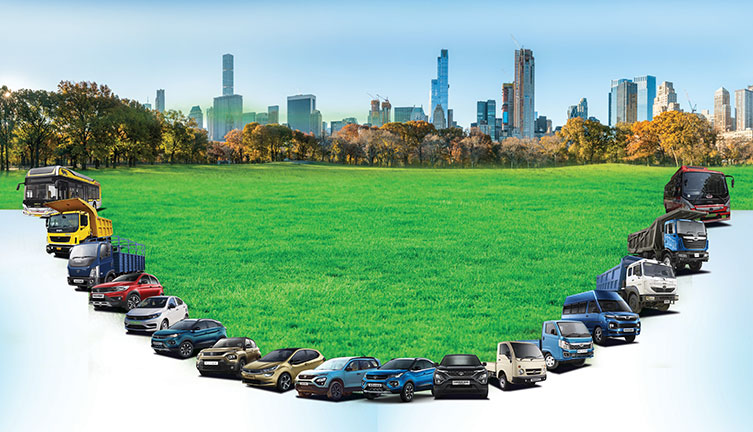
Towards green mobility
The major systemic upheavals that the automobile industry is witnessing have led Tata Motors to reposition its mobility solutions. In 2019, Tata Motors rolled out ‘CESS’ — the company’s vision for the future of mobility — to deliver efficient, green, and sustainable mobility solutions. Through its focus on CESS, the company is investing in R&D for safe, sustainable, smart, and connected green mobility solutions, including the introduction of battery electric vehicles (BEVs) in its PVs and hydrogen fuel cell technologies in its CVs.
Connected: Connected vehicles are the new norm in the automobile industry. Towards this, Tata Motors has developed the first indigenous Connected Vehicle Platform (CVP) for its entire range of CVs, PVs, and EVs. Developed in collaboration with Tata Elxsi, Tata Communications, Tata Technologies, and Tata Consultancy Services, the in-built CVP technology in vehicles provides a host of smart and convenient features, like collecting data, creating insights, performing analytics, and enhancing decision-making, thereby making the overall driving experience safe and pleasurable.
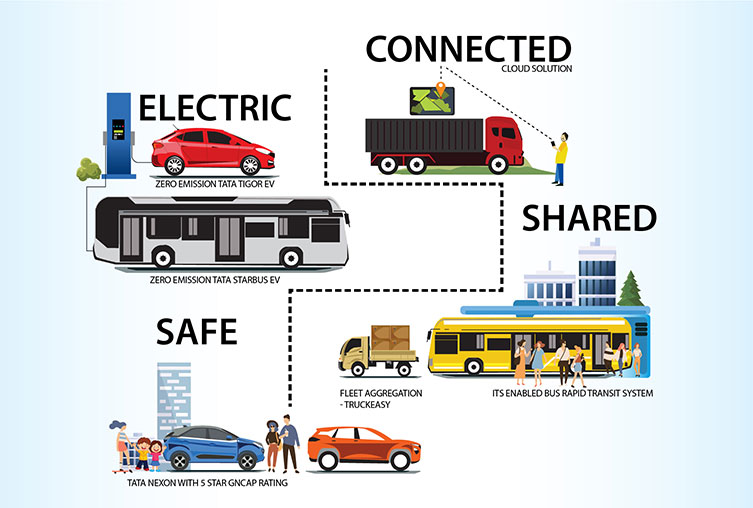
The digital route
Tata Motors has rolled out customised connected features across its PVs, CVs and EVs based on customer profiles and product positioning.
iRA (iNTELLIGENT Real-Time Assist): iRA keeps customers connected with their cars and the world. With a suite of 27 connectivity features, including remote commands, vehicle security, location-based services, gamification, live vehicle diagnostics, this connected car technology makes driving a delight.
ZConnect: To improve the driving experience of its EVs, Tata Motors launched the ZConnect app that allows owners to control their vehicle remotely by providing its live location along with information about the nearest charging halts and service stations. The app's safety features include instant crash and panic notifications, emergency SOS, request for remote immobilisation service via a dedicated 24x7 call centre, as well as a detailed diagnostic report of key vehicle parameters. The app displays a driving scorecard that throws light on harsh acceleration or braking and more. ZConnect also allows the driver to set custom speed, geo-fence or time-fence limits that trigger alerts on the driver's smartphone should there be a breach.
Fleet Edge: In the CV segment, the company introduced Fleet Edge, its next-gen digital solution, which has set a new benchmark in vehicle and fleet management across vehicle segments. Developed in-house, this connected vehicle platform enables owners to improve operational efficiency and cost-effectiveness by providing real-time tracking of vehicle health parameters and driver behaviour, thus improving asset utilisation. Over 140,000 Tata Motors vehicles are connected to this platform that offers features like track and trace, geo-fence and alerts, driver behaviour vigil, and fuel efficiency monitoring.
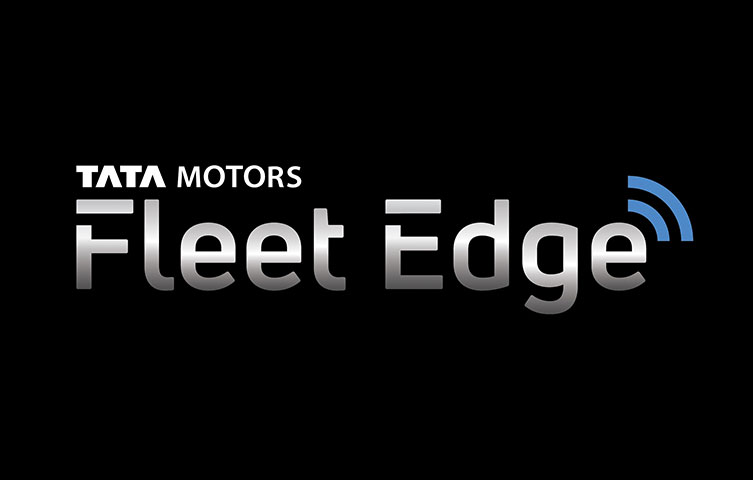
Tata Motors' Engineering Research Centre
Tata Motors' New Product Development Programmes are targeted at GenNext to address their evolving mobility needs. They also leverage the benefits of modular, scalable architectures with the extensive use of standardisation, leading to lower costs and quicker time to market.
Tata Motors' Advanced Power Systems Engineering Tech Centre, located at its Engineering Research Centre in Pune, plays a key role in testing and developing innovative powertrain solutions for its product portfolio. Aligning to futuristic trends, the centre has been driving electrification by adapting to new technologies such as battery and fuel cells, as well as compliance across the product development process.
At Tata Motors' design studios — in Pune, the UK, Italy and South Korea — automotive design teams collaborate with other teams to provide technology-rich features in vehicles. By implementing Dimensional Variation Analysis, Tata Motors has enhanced the quality of its product design as well as its manufacturing quality by relying on manufacturing process simulations.
To cut down on physical automotive tests, the company has embedded predictive models, GPGPU (general purpose graphics processing unit) based algorithm-driven computing infrastructure for deep learning (AI), as well as apps into its design process. Trained AI models create synergy between physical and digital simulations, leading to better correlation.
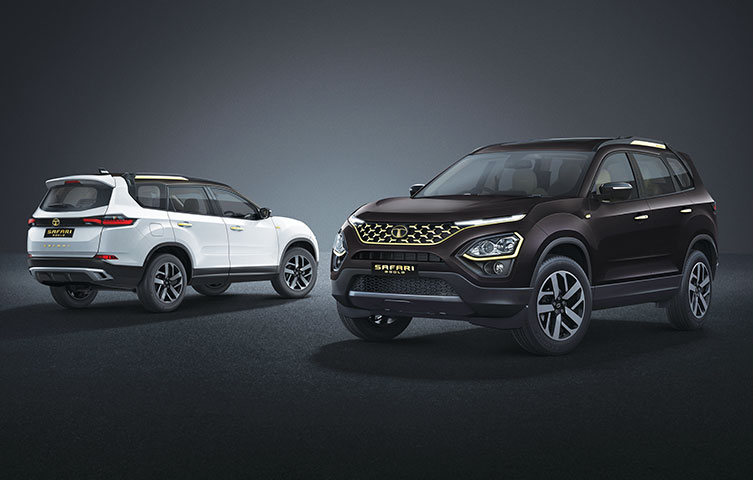
In 2016, the company introduced the Impact Design 2.0 philosophy for its PV segment. The company's New Forever range of cars, including the Tiago, Altroz, Tigor and SUVs — Punch, Nexon, Harrier and Safari — are built on this design language. For the CV segment, Tata Motors' Premium Tough Design philosophy combines exterior visual richness and sophistication with interior robustness and reliability.
In 2020, Tata Motors received 98 patents for CESS automobiles, thereby demonstrating its earnestness in engineering excellence and innovation towards connected and green mobility.
Delighting customers with a digital first approach
The company has invested in innovative sales processes to facilitate a seamless purchase process for its customers. ‘Click to Drive’ is one such contactless sales platform that enables you to buy a car safely and conveniently from the comfort of your home. This platform has been seamlessly integrated with all Tata Motors’ dealer outlets as well as supporting financiers, reducing the end-to-end turnaround time from 7 days to less than 24 hours.
The company also introduced ‘Imaginator’ and ‘3D Commerce’, an immersive virtual showroom experience, allowing customers to explore and customise the vehicle of their choice by selecting from a range of colours, variants, features, and accessories. More than 67 percent of Tata Motors’ customers reach out to the company via digital channels, a significant increase from previous years.
Advances in technology and a customer-centric approach has led to the creation of a special service connect app that empowers customers with repair estimates, information, and updates on their vehicle repair progress in real time.
Deployment of automation tools, an inventory portal and cloud-based software solutions have improved operational productivity of dealers with faster inventory mobilisation and reduced repair time per vehicle.
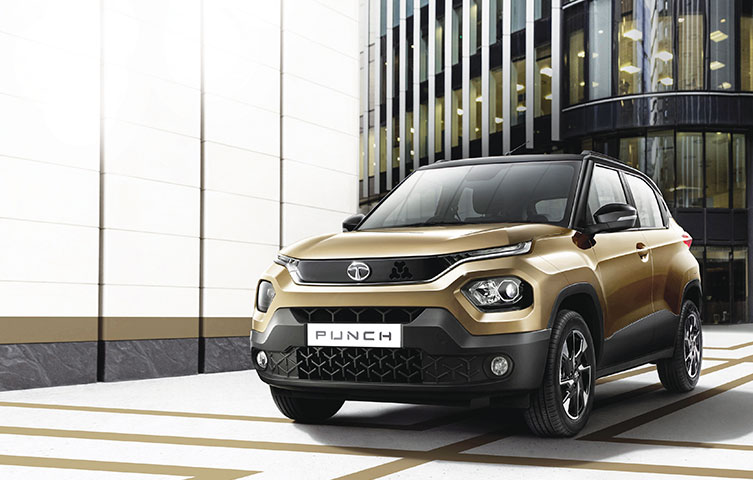
Electric: The impact of climate change and depletion of fuel reserves have necessitated the introduction of sustainable mobility solutions worldwide, with electrification riding the wave. The Government of India (GoI) has defined the electrification roadmap for the country by setting up an ambitious target of 30% electric vehicle penetration by 2030. The Ministry of Heavy Industries has shortlisted 11 cities in the country for the introduction of EVs in their public transport system under the FAME (Faster Adoption and Manufacturing of Hybrid and Electric Vehicles in India) scheme. Furthermore, India's EV market is estimated to be a 50,000 crore (US$7.09 billion) opportunity by 2025.
Tata Motors has been leading this megatrend of bringing e-mobility to India. With a market share of more than 70% and significant leadership in the electric car market, Tata Motors is the only OEM with an end-to-end extensive product portfolio. The company is manufacturing environment-friendly electric and green mobility solutions not just in its PV segment but also across its CV segment. The Nexon EV was Tata Motors' first offering to the EV segment and was launched just before the pandemic hit the world. Despite the odds, over 10,000 Nexon EVs have been sold and it continues to be a favourite, covering 312km on a single charge (Automotive Research Association of India's test). It's powered by the cutting-edge Ziptron technology, an efficient high voltage system, fast-charging capability, extended battery life, and enhanced safety features. The recently launched Tigor EV, using this technology and powertrain, is today India's most affordable EV.
Among its CV offerings, the Starbus electric buses, plying in metros, are augmenting India's mass rapid transport system through green mobility. Now seen in more than 5 states, these buses have collectively clocked in 10 million kilometres. Transcending beyond just manufacturing buses to providing holistic public transport solutions, Tata Motors offers end-to-end solutions, including charging infra, fleet management and vehicle maintenance for its e-buses.
Recently, Tata Motors became the first Indian OEM to receive an order for 15 hydrogen fuel cell buses from the Indian Oil Corporation Ltd. The buses, using new technology that produces only water and heat as a by-product, are three times more efficient than the traditional combustion engine vehicles.

The company has built an enabling ecosystem of sustainable mobility technology with the support of the One Tata ecosystem. It has collaborated with Tata companies to build Tata UniEVerse, a suite of e-mobility offerings. Customers can install EV chargers in homes and offices, as well as access public charging stations provided by Tata Power. In partnership with Tata Chemicals, Tata Motors has developed the component supplier ecosystem to manufacture lithium-ion battery cells and to recycle them. Tata AutoComp is looking into localisation of battery pack assembly and motor assembly, while Croma offers the digital retail experience to Tata Motors' customers. To close the purchase cycle, Tata Motors Finance provides finance solutions for both personal and fleet segments.
The recent deal with TPG Rise Climate to invest $1 billion in Tata Motors' passenger electric business, which is valued at over $9 billion, is another step in the direction of promoting electric mobility. With a commitment to invest $2 billion and introduce 10 EVs by 2025, Tata Motors has stated its intent to lead India's EV revolution.
On signing the agreement, N Chandrasekaran, Chairman, Tata Sons, said, “I am delighted to have TPG Rise Climate join us in our journey to create a market-shaping electric passenger mobility business in India. We will continue to proactively invest in exciting products that delight customers while meticulously creating a synergistic ecosystem. We are excited and committed to playing a leading role in the government’s vision to have 30% electric vehicles penetration rate by 2030.”
With plans to make Jaguar an all-electric brand by 2025, launch the first battery-electric Land Rover by 2024, offer BEV on all Jaguar Land Rover models by 2030, and make EVs ubiquitous by introducing 10 BEVs in India by 2025, Tata Motors is set to lead the exponential EV penetration globally.
Shared: Never has there been a greater need for shared mobility as is being currently felt across the country. As cities are getting crowded, roads congested and the transport system overburdened, Tata Motors is bringing innovative solutions to address these burgeoning issues. The Government of India’s ‘Smart Cities’ mission has given the company an impetus to introduce technological innovations in the shared mobility space.
The company’s ‘Electrifying Subscription’ offer and its XPRES brand for the fleet segment are examples of its commitment to shared mobility. Through the former, Tata Motors is making the Nexon EV accessible to environmentally conscious customers by promoting usership over ownership. The offer allows customers to rent the vehicle for a minimum period of 12 days to a maximum of 36 months at an all-inclusive fixed rental, starting at just Rs 34,900 per month. Customers can now cruise around in their Nexon without the hassle of traditional vehicle ownership such as road tax and registration, insurance renewals, and maintenance. The recently launched XPRES-T EV is exclusively for fleet customers — targeted at mobility services, corporate and government fleet customers. It comes with an optimal battery size and a captive fast-charging solution, ensuring an outstandingly low cost of ownership with safety and passenger comfort to make it a comprehensive and attractive proposition for fleet owners and operators.
Tata Motors' flagship SUVs, Safari and Harrier, share the powerful and robust OMEGA Architecture while the Altroz premium hatch and Tata Punch are built on the agile and versatile ALFA Architecture . Commonality in architecture across multiple products helps to scale, improve efficiency, and reduce time and costs in introducing new products.
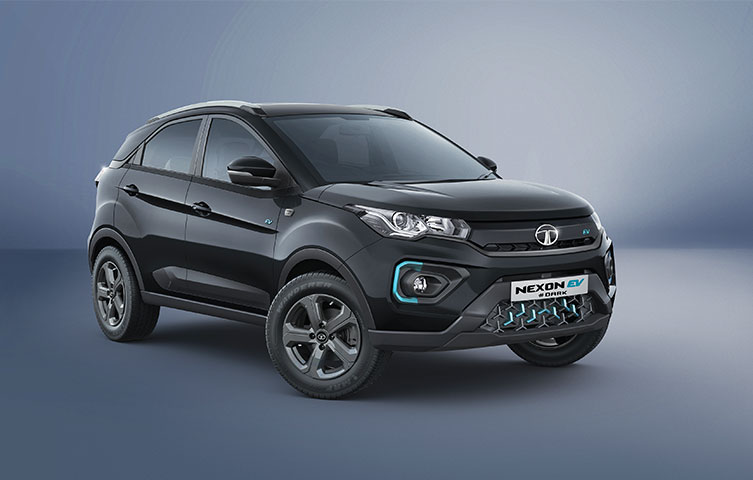
The company offers a range of powertrain combinations in both engines and transmissions. Tata Motors' sophisticated gasoline, diesel and CNG engines, manufactured at its plants, offer unrivalled fuel efficiency, unbeatable performance, unmatched durability, and steadfast reliability. The 1.2L turbocharged petrol engines from Revotron and the 1.5L Revotorq diesel engines have been specially designed for its PVs, with multi-drive modes — eco, city, and sport — a first-of-its-kind in India's PV space. The Turbotronn series of diesel engines with 3L, 3.3L, and 5L capacities are installed in Tata Motors' range of CVs. These engines offer high fuel efficiency and are suited for varied applications across the duty cycles. Tata Motors' CVs are also powered by Cummins engines in the M&HCV (medium and heavy commercial vehicles) portfolio with a focus on reliability and fuel efficiency, resulting in the segment-best total cost of ownership for the fleet owners.
Safe: To avoid road accidents, the GoI has prescribed a host of safety norms for automobile manufacturers. These include ABS (anti-lock braking system) or driver-side airbag, speed warning system, seatbelt reminder for the driver and co-driver, rear parking sensors and stringent requirements to offset the full-frontal impact caused by accidents. Tata Motors has set new benchmarks in car safety standards with Tata Punch becoming India's safest car at launch, Tata Nexon becoming the first safest car in India, and Tata Altroz becoming the country's first hatchback to receive 5-star adult safety ratings from Global NCAP (New Car Assessment Program).
Tata Motors maintains the best R&D standards in the industry. It has established an end-to-end powertrain development facility for BS6 development, set up Asia's first anechoic chamber, started India's first full vehicle crash test facility and launched India's only full climate test facility.
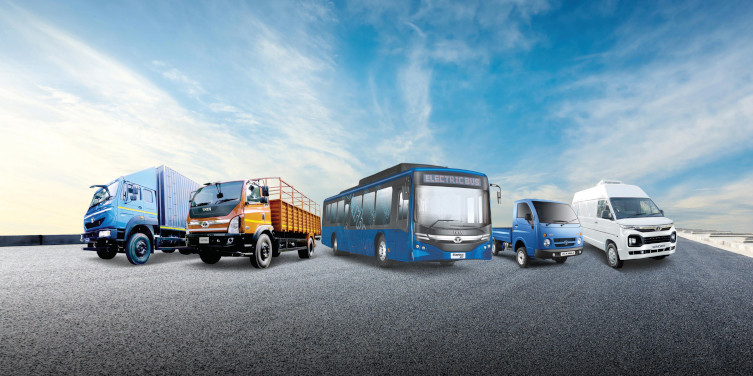
Safety is an important pillar of product development at Tata Motors, starting from the design stage. All new generation vehicles are equipped with active and passive safety features, including electronic stability program, airbags, seat belt reminders, ISOFIX child seats, and reverse parking camera, to name a few. The active and passive safety of a vehicle goes well beyond the sturdiness/quality of the metal used and the number of airbags present.
Rajendra Petkar, president & chief technology officer, Tata Motors, says, “We design and engineer our products keeping customers’ evolving mobility needs at the core. Our efforts have contributed to redefining the future of transportation in India by progressively investing in research and development of safe, sustainable, smart and connected mobility solutions. In 2019, we announced our aspiration to introduce over 100 lead models with over 1000 variants, complying to stringent BS6 emission norms while covering options of powertrain combinations, body styles, chassis configurations plus technologies imbibing connected, electric, shared and safety features. Significant front loading of activities, use of digital product development tools and early involvement of globally reputed technology and supplier partners enabled us to accelerate our portfolio migration. With the successful rollout of the state-of-the-art Ziptron architecture, developed in-house by our team to power EVs, we have democratised the high voltage system for mass-market adoption. High-end features including those for connected vehicle, a new design language under Impact 2.0, rich software functions and safety aspects — all combine to delight customers and contribute to enabling a Connected India.”
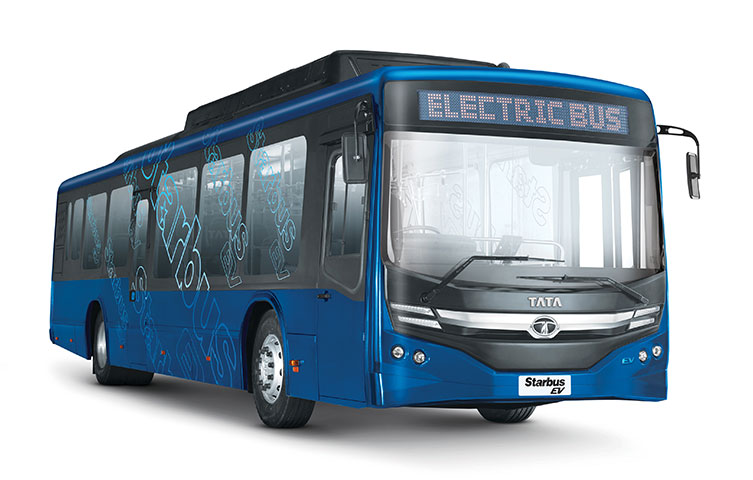
Driving sustainability
In line with the Tata group's credo to embed sustainability in the group companies' business strategies, Tata Motors has been promoting sustainable product stewardship throughout its business value chain from designing to dismantling. Tata Motors will support the Government of Gujarat in setting up a vehicle scrapping facility in Ahmedabad, recycling up to 36,000 end-of-life vehicles (ELV) annually — both PVs and CVs.
Tata Motors has established a robust vehicle level database for part material weight through IMDS (International Material Database System) and developed an in-house Environment Compliance module to compute vehicle level recyclability and recovery. Tata Nexon became the first Indian car to be published on the prestigious International Dismantling Information System (IDIS) for end-of-life vehicles, a step in the direction of sustained benefits for the ecosystem stakeholders and the environment alike.
To reduce its environmental footprint, Tata Motors has rolled out initiatives such as maximising renewable energy consumption, driving energy conservation (ECON) projects, switching from liquid to gas fuel, emphasising on alternative drives and EVs and using Science Based Target Initiative (SBTi) for setting GHG (greenhouse gases) targets. Committed to using 100% renewable energy in its operations, Tata Motors in FY21 generated 88.71 million kWh of renewable electricity (equivalent to 72,739 metric tonnes of carbon dioxide emissions that would have been generated otherwise) which is over 21% of its total power consumption (up from 16% in FY20).
Aspiring to source 100% renewable energy by 2030, Tata Motors entered into an agreement with Tata Power to jointly build India's largest grid-synchronised, behind-the-meter solar carport at its car plant in Chikhali, Pune. Spanning over 30,000 square metres, this carport not only generates green power but also serves as a covered car parking for its finished cars. This 6.2 MWp solar carport will generate 86.4 lakh kWh of electricity every year, thereby reducing an estimated 7,000 tonnes of carbon emissions annually and 1.6 lakh tonnes over its lifecycle.
SJR Kutty, chief sustainability officer, Tata Motors, says, “At Tata Motors, ‘responsibility’ is one of our core values. We have consciously ingrained sustainability in every aspect of our business by stretching ourselves to adopt more meaningful ways to reduce our impact on the planet, while still delivering exciting products and sustainable solutions to our customers. Going beyond mere compliance, we have actively pursued the practice of continuous improvement and inclusiveness.”
Weathering the storm
The disruptions caused by the pandemic to global supply chains have curtailed availability of critical components to the global auto industry, including India. Adopting an agile, multi-pronged approach, Tata Motors has been a rare exception to successfully ramp up production despite the challenges. The company today has around 400 suppliers or ‘parent vendors’ down from around 1,400 three years ago. Its supply chain mapping system provides insights into the supply chain tiers, thus enhancing operational efficiency. For instance, as lockdown restrictions eased in Pune but not in Chennai, data analytics results, using the supply chain mapping tool, provided vehicle configurations that could be manufactured with the parts supplied by vendors who had started operations.
Thomas Flack, president & chief purchasing officer, Tata Motors, says, “We operate an effective supply chain risk management framework that enables proactive engagement with our suppliers to diagnose and mitigate potential disruptions. This has allowed us to have a much better visibility across our multi-tier supply chain, thereby helping us manage the lead time sensitivity. Our comprehensive approach and the tools we implemented enabled us to unlock growth, beyond pre-Covid performance.”
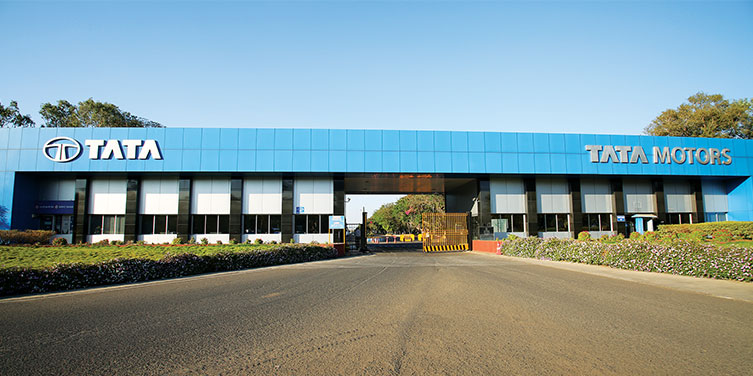
Delivering superior performance
The past year was volatile: vehicle sales plummeted; production cycles, supply chains and retail networks were disrupted; steel and fuel prices rose; and an acute shortage of semiconductors wreaked havoc the world over. Tata Motors, however, has emerged more resilient and stronger from the pandemic-induced crisis. The company's financial prudence and cost control measures resulted in its healthy performance across key metrics — volumes, revenue, and profitability. Sales in the domestic and international market grew by 55% over Q2 FY22, with 1,71,270 vehicles sold as against 1,10,345 in Q2 FY21.
PB Balaji, group chief financial officer, Tata Motors, says, “The automotive industry has witnessed a consistent rise in demand, which is in line with the overall economic growth. In Q2 FY22, we accelerated the sales momentum to increase market share in every segment of commercial vehicles, recorded a decade high sale in passenger vehicles and delivered the highest ever quarterly sales in electric vehicles. We expect the demand for all segments to remain strong, even as concerns about the supply of semiconductors and high input costs continue. Sequential improvement in overall performance is expected to see an uptick, and we are targeting for positive EBIT and free cash flow in the second half of FY22.”
The company’s CV domestic sales in Q2 FY22 were ~80% higher than the previous quarter and 50% higher than in the same quarter last year. Girish Wagh, executive director, Tata Motors, says, “India is rapidly emerging as one of the leading global economies and also radically shaping its actions towards sustainable and responsible growth. Transportation is a key growth pillar for the economy and will play a significant role in India’s journey towards net zero emissions over the coming decades. At Tata Motors, we design and lead both technology and product innovations that contribute to the nation’s growth. Being the market leader in the commercial vehicle industry, our consistent endeavour is to deliver a superior value proposition to our customers via comprehensive, end-to-end solutions.
“Our widest portfolio of products, including zero-emission EVs, the largest pan-India network, our bouquet of offerings through Sampoorna Seva, value-added services, and new evolving business models offering mobility as a service for the state transport undertakings — all aim to offer complete peace of mind to customers. By introducing smarter, application-oriented, holistic mobility solutions, we are making our customers future-ready while fulfilling their core needs of the low total cost of ownership and better profits.”
Tata Motors’ PV business also showed a phenomenal growth with nearly a decade high quarterly sale of 83,933 units, registering a strong growth of 53% vis-à-vis its sales during the same period last year. In the EV segment, the company has consistently crossed the 1,000-unit milestone to register its highest ever monthly and quarterly sales of 1,078 units and 2,704 units, respectively. Shailesh Chandra, president, Passenger Vehicles Business Unit, Tata Motors, says, “Winning sustainably in PV and winning proactively in EV, have been central to our growth strategy. In the past two years, we have focused on massively scaling up the PV business to make it financially sustainable, by re-imagining the front-end and ensuring that each product in our New Forever range is among the top selling cars in their respective segments. In the EV business, we are leading the charge through rapid development and launch of EV models, in both fleet and personal segments, and overcoming barriers to adoption by developing the entire EV ecosystem, in collaboration with various Tata Group companies, under the umbrella of Tata UniEVerse.”
Being future ready
Behind Tata Motors’ success is a dedicated team connecting the aspirations of all its stakeholders — customers, shareholders, suppliers, partners, retailers, and the community at large. The company’s culture credo, ‘More When One’, embodies it and encourages the Tata Motors fraternity to be bold in thought and action, own every opportunity and challenge, solve problems as one team, and engage with stakeholders empathetically.
Ravindra Kumar GP, president and chief human resources officer, Tata Motors, says, “We are enriching our over 75-year legacy by blending learnings from the past with the dynamism of today such that we can capitalise on the opportunities of tomorrow. With culture as the catalyst, we are creating an agile and future-ready workforce. We are working to equip our employees with necessary learnings, experiences and skill sets to optimise the fullest potential of each individual in their preferred area of expertise. The entire leadership team at Tata Motors is committed and actively engaged in this endeavour.”
Mobility habits will change as the electro mobility revolution gathers speed and more people opt to travel by electric vehicles as their first choice. Tata Motors caught on early to this megatrend. With its ingenious powertrain solutions, technology-rich and connected features, new product development programmes, and user-oriented innovations, the company is breaking new ground by consistently enriching options for green mobility with holistic solutions in personal, public and cargo mobility to facilitate their easy access and mass adoption.
—Farah Dada


